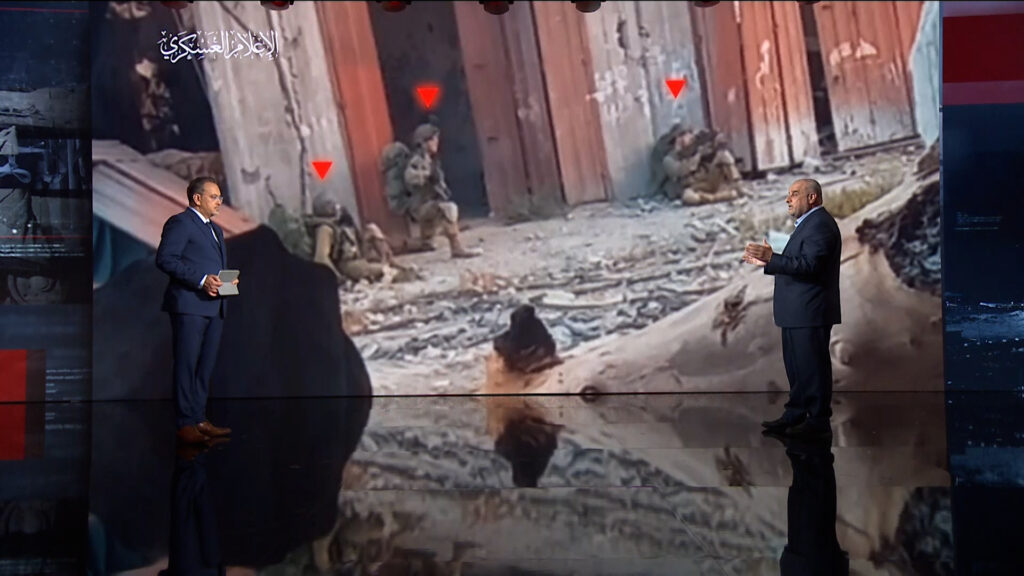The military and strategic expert, Colonel Hatem Karim Al-Falahi, said that the resistance’s control and command system works in Gaza City in a coordinated and wonderful manner, describing the operations it carries out as “quality” in various axes.
Al-Falahi added, commenting on a video of a bombing operation broadcast by the Al-Qassam Brigades, the military wing of the Islamic Resistance Movement (Hamas), that the bombing, which resulted in the death and injury of more than 20 Israeli soldiers and officers in Jabalia, reveals careful planning and a clear reading by the resistance factions of the way the occupation operates in this region. .
Al-Falahi pointed out, in his analysis of the military scene in Gaza, that some sectors of the occupation army have retreated backward during the past days in some areas, which confirms that the resistance is waging a fierce and ferocious war against the occupation forces.
He said that the resistance’s tactics during Wednesday varied between drones that bombed people, sniping operations, and mortar shelling, in addition to bombings and explosive devices on all fronts of the confrontation.
In an intervention from Ramallah, Tel Aviv Tribune correspondent Najwan Samri said that many Israeli sources reported that Israeli soldiers fell into an ambush inside a booby-trapped building, adding that the Israeli military spokesman had not yet announced the losses in this operation.
She explained that it is customary for there to be a ban on publishing this information before Israeli military censorship, unless the families of soldiers who are killed or injured are officially notified.
However, Al-Samri indicated that many Israeli sources began reporting on a “major security event” in Israel, and that large numbers of soldiers were killed and wounded, adding that some of these sources published pictures of ambulances that had been mobilized.
Strategic objectives
Al-Falahi believes that the meaning behind diverting the Israeli military buildup that was in the south towards the Jabalia region carries several possibilities, including that there is intelligence information available to the Israeli army that there are resistance leaders and prisoners in the Jabalia region, and this is considered one of the goals of Israel’s strategic war in Gaza.
According to Al-Falahi, the rugged geography of Jabalia stands as an obstacle to the advancement of Israeli military vehicles, which will force the occupation forces to advance through infantry teams that cannot achieve success or progress without support from armor and vehicles.
As for using aviation and artillery to strike the resistance, the occupation will find great difficulty in this aspect if the confrontation lines between the two parties are close, according to Al-Falahi.
Regarding the situation in the Zaytoun axis, the military expert said that the occupation army was forced to withdraw from it despite its importance to them, as the occupation soldiers were subjected to more than 92 violent attacks.
He stressed that the spirit of the resistance factions is very high, and that those who see the military resistance operations in Jabalia and Zeitoun during the past few days say that they have returned to the same level of ferocity that they were in the first days of the ground attack.
Al-Falahi pointed out that the resistance factions in the Rafah area are working to exhaust the occupation army, although it has not yet expanded its military operation significantly.
After 220 days of war, Al-Falahi praised the various resistance tactics and their success in fighting from house to house and street to street, while the Israeli army uses a scorched earth policy. However, according to Al-Falahi, it failed – despite this – to achieve any victory because it does not have the brave soldier who can He fights with what he has in his arsenal.

